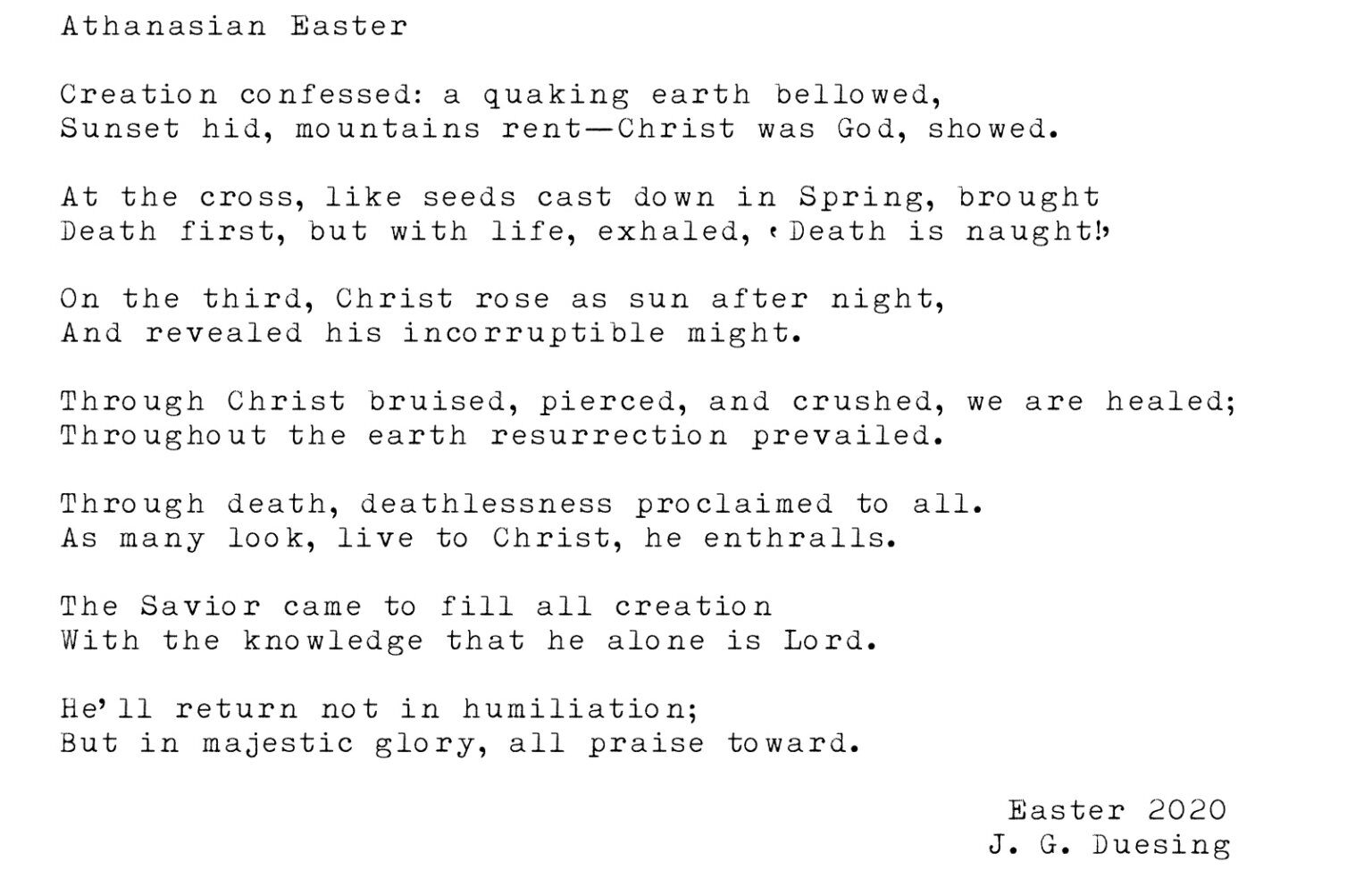
In the mornings this year I’ve been re-reading a fourth century masterpiece.
While Athanasius’s On the Incarnation is remarkable, it was C. S. Lewis who termed it a ‘masterpiece’ in his famous introduction to a new English translation of Athanasius’s work.
As I read through the chapters of De Incarnatione Verbi Dei, I started summarizing each of the fifty-seven sections in my own words and soon realized the helpfulness of this exercise.
Reading this old book has served to accomplish for me what C. S. Lewis hoped it would. Lewis advised, then in 1944, that in an era of modern controversies and division within Christianity “the only palliative is to keep the clean sea breeze of the centuries blowing through our minds, and this can be done only by reading old books.”
In specific, Lewis had in mind books that put forth a “standard of plain, central Christianity which puts the controversies of the moment in their proper perspective.” Even though it is now 2020 and we are not facing the same controversies of 1944, Lewis’s commending the reading of On the Incarnation does, indeed, put our controversies in perspective.
My reflection led me to another thought: could I condense and conform my thoughts on Athanasius’s work into a poem to summarize what I had gained? As only a poetry-appreciator, not a poet, I set out to learn more about form and structure and settled on a simple sonnet.
The sonnet, I learned, allows for poems with musicality but also to be read in silence. The 14-line structure and rhyming patterns function “like a box” and since sonnets are often meant to focus on a person, I thought it a good form to follow for a poem on the incarnation of Christ.
The result of my reflections on this “old book” was, first, a sonnet for Advent, and now the following sonnet for Easter.** Thanks to C. S. Lewis, it has helped me to keep this remarkable year in proper perspective.

**Working from my summaries of Athanasius’s last five chapters, I sought to structure the three quatrains around each chapter, with the last focusing on the last three. I created a spreadsheet to aid in building each of the 14 lines in iambic pentameter and around a specific rhyming sequence and then edited to final form.
For further reading:
- Athanasius, On the Incarnation: the treatise De incarnatione Verbi Dei, translated and edited by a religious of C.S.M.V. (Centenary Press, 1944).
- C. S. Lewis, “Introduction,” in Athanasius, On the Incarnation (St. Vladimir’s Seminary Press, 1996).
- Peter Barnes, Athanasius of Alexandria: His Life & Impact (Christian Focus, 2019).
- Rachel Richardson, “Learning the Sonnet,” Poetry Foundation, August 29, 2013.
* This article was originally published at jgduesing.com

